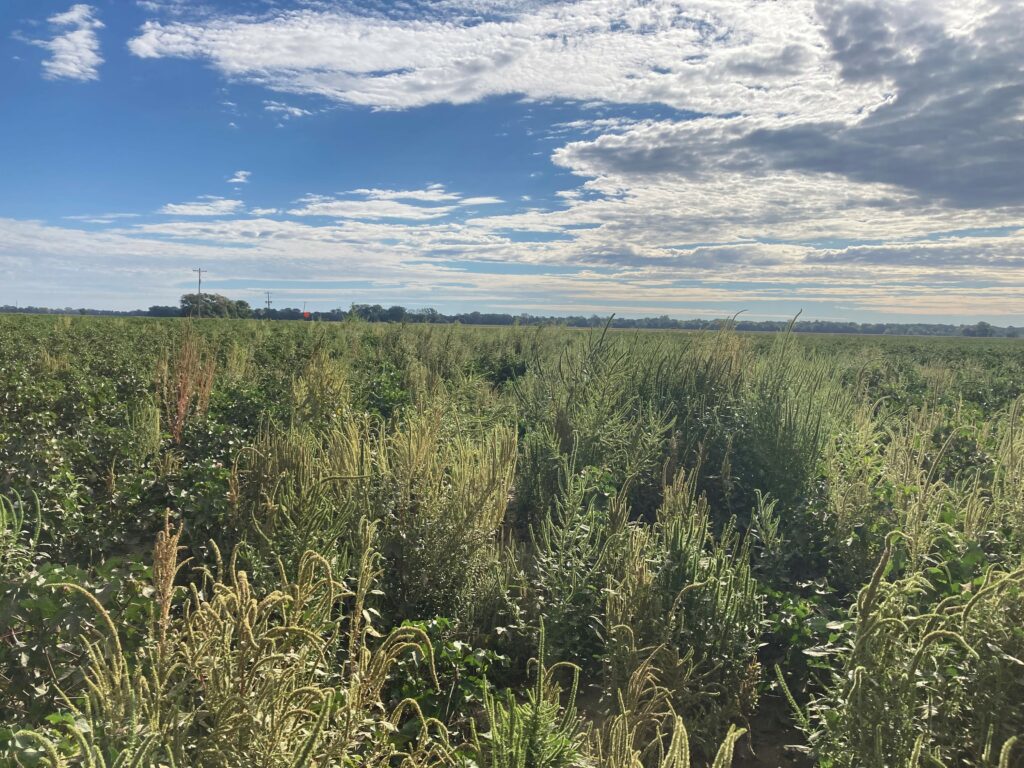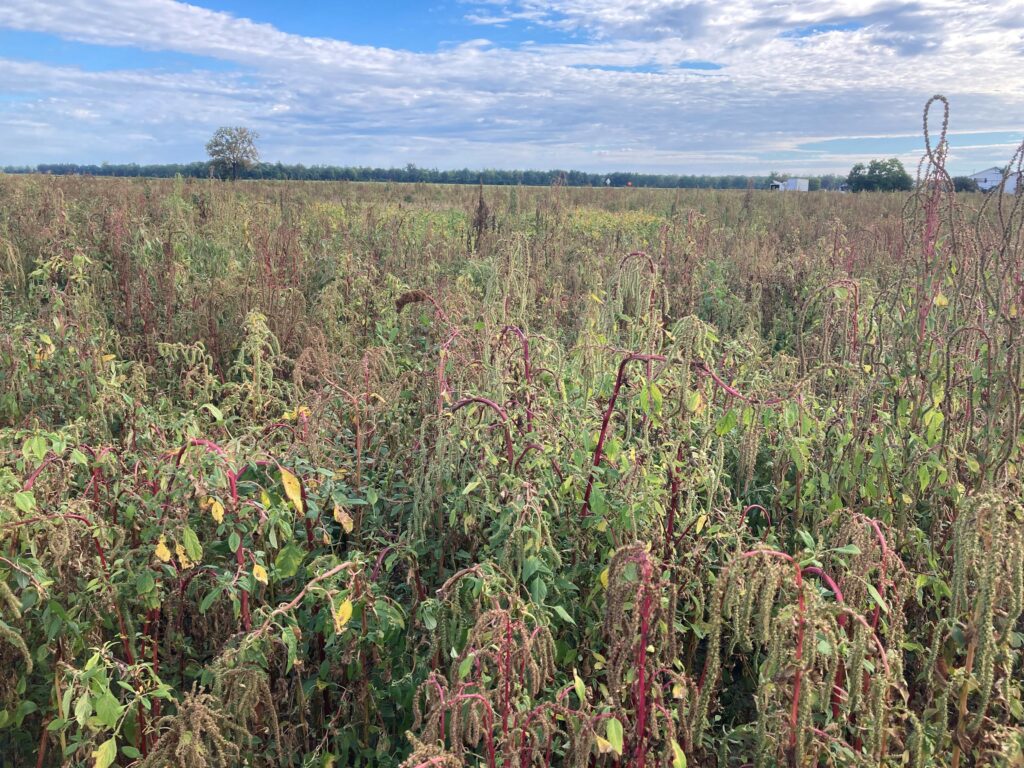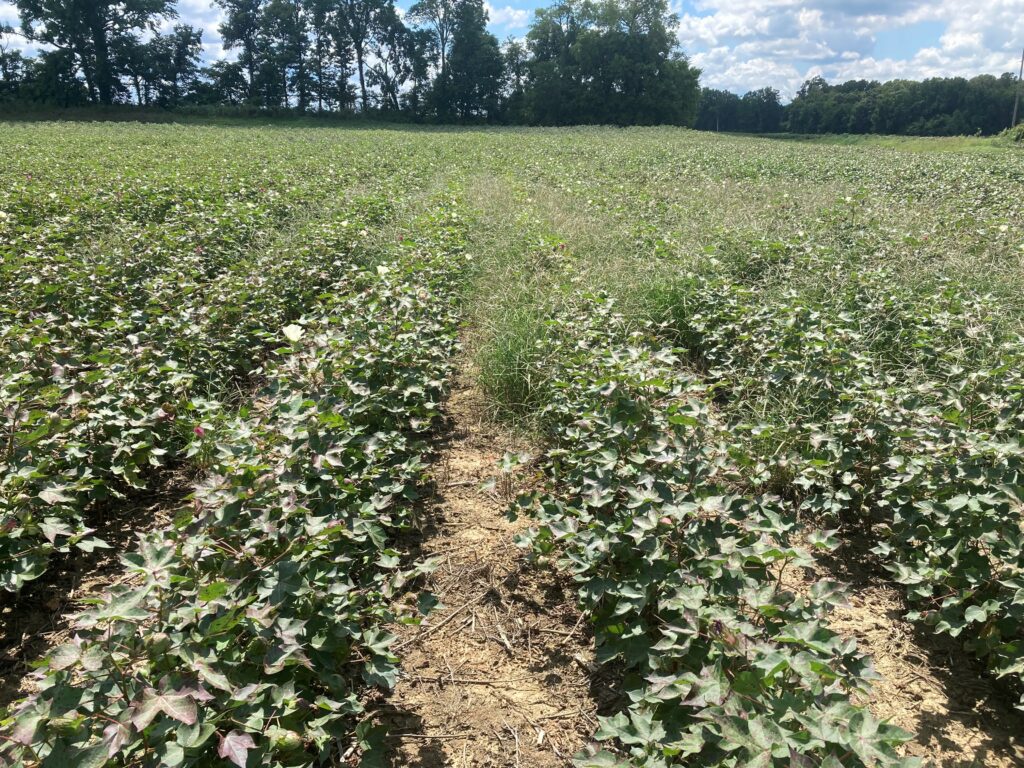
Every fall we travel around the state and observe the overall success or failure of weed control in our row crops. From the Palmer amaranth standpoint a few too many fields look like a failure. Particularly, from Gibson county across to Lauderdale county cotton and soybean fields ranged from clean fields to fields with more weeds than one would like (Picture 1) to completely grown up pigweed messes (Picture 2). A few too many of these fields look very similar to some fields a decade ago where they were so grown up in pigweed a producer had to question if it was worth harvesting.

There are several reasons for the poor Palmer control this year. First the dry stretch in June and July made PRE applied herbicide(s) more inconsistent. This put more pressure on the POST application, which was dicamba in most cases, to pick up the slack. Dicamba clearly failed to do so in some of these fields. Based on our recent greenhouse screens dicamba resistance in our Palmer amaranth populations is expanding and is a major reason for the lack of control.
Another reason for the poor Palmer amaranth control was in fields where Liberty could not be used to treat Palmer amaranth that had escaped dicamba. This was in part due to the tight supply issues with Liberty. It was also obviously an issue in Xtend soybeans that were planted on significant acres in 2022 and do not have Liberty tolerance.
In other counties the pigweed control is better but the grass control, particularly goosegrass, was really lacking in some fields (Picture 3). What is often observed if a field has a weed problem is that it typically is grass (goosegrass and/or junglerice) or it is Palmer amaranth. It is rarely both. What, in part, happens is the grass pressure helps keep the Palmer amaranth in check and vice/versa. On a real bright spot, cotton fields that were treated with Zidua impregnated on fertilizer looked to have better pigweed and grass control.

Looking to next year, for those fields that have high Palmer amaranth pressure consider planting a cover crop of cereal rye or wheat. In our research those cover crops can reduce the number of Palmer amaranth that emerge in next year’s cash crop by 50%. Another good option is to rotate those fields to corn and use a robust PRE followed by POST applied program.
If the field is to go back to soybean or cotton next year then consider planting Enlist crops and utilizing Enlist One + Liberty tankmix which in our research is the most consistent POST application on Palmer amaranth. If the field is to be planted back to Xtend crops then the most effective pigweed tactic is to apply a Liberty application shortly after the dicamba POST application. This can be effective but typically is less consistent than applying the Enlist One + Liberty tankmix in Enlist crops. The main reason for that is the logistics of getting back around to spray Liberty timely after the dicamba pass can be a challenge.

